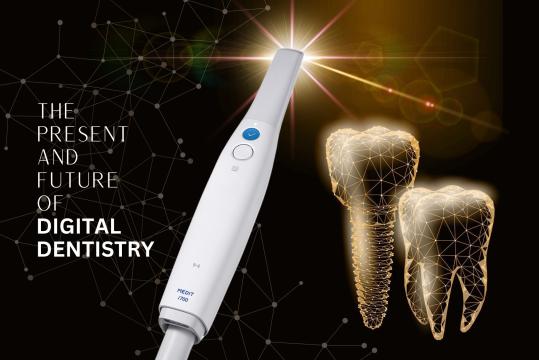In recent years, advancements in technology, including Dental Medical Equipment, have transformed nearly every aspect of our lives, and dentistry is no exception. Digital dentistry, the integration of digital technologies into dental practice, has revolutionized the way dental professionals diagnose, plan treatments, and fabricate dental restorations. As we delve into the present state and future prospects of digital dentistry, it becomes evident that this field is poised for even more remarkable developments.
Paramount Medical Equipment offers a wide range of Digital dentistry Solutions
The Current Landscape
Digital dentistry encompasses a wide range of technologies and applications, including digital radiography, intraoral scanners, computer-aided design and computer-aided manufacturing (CAD/CAM) systems, 3D printing, and virtual reality. These technologies have already significantly improved the precision, efficiency, and patient experience in dental care.
Intraoral scanners have replaced traditional messy impressions, enabling dentists to capture detailed digital images of the patient’s teeth and oral tissues quickly and comfortably. CAD/CAM systems allow for the fabrication of dental restorations, such as crowns, bridges, and veneers, in a single visit, eliminating the need for temporary restorations and multiple appointments.
Furthermore, digital imaging technologies, including cone beam computed tomography (CBCT), provide detailed 3D images of the oral and maxillofacial structures, aiding in accurate diagnosis and treatment planning for procedures such as dental implant placement and orthodontic treatment.
Paramount Medical Equipment Trading Showcase Digital Dentistry Equipment with Cutting edge technology
Future Innovations
Looking ahead, the future of digital dentistry holds even more exciting possibilities. One promising area of development is the use of artificial intelligence (AI) and machine learning algorithms to analyze dental images and assist in diagnosis and treatment planning. AI-powered software could help dentists identify abnormalities in radiographs, detect cavities at an early stage, and predict the outcome of orthodontic treatments.
Another area of growth is the integration of 3D printing technology into various aspects of dental practice. 3D printers can produce dental models, surgical guides, and even custom-made dental prostheses with unparalleled precision and efficiency. This technology has the potential to streamline workflow, reduce costs, and enhance the quality of dental care.
Additionally, virtual reality (VR) and augmented reality (AR) are poised to transform dental education and patient communication. VR simulators can provide dental students with realistic training environments for practicing procedures, while AR applications can overlay digital information onto the patient’s real-time view, facilitating communication between dentists and patients during treatment planning, all complemented by the advancements in Dental And Medical Equipment.
Challenges and Opportunities
While digital dentistry offers numerous benefits, it also presents challenges that must be addressed for its widespread adoption. These challenges include the initial investment costs, the need for continuous training and education for dental professionals, and ensuring the security and privacy of patient data in digital systems.
However, these challenges are outweighed by the opportunities digital dentistry presents for improving patient care, enhancing clinical outcomes, and advancing the field of dentistry as a whole. As technology continues to evolve and become more accessible, we can expect digital dentistry, with the incorporation of Dental Equipment UAE, to become the standard of care in dental practices worldwide.
In conclusion, digital dentistry has already transformed the way dental care is delivered, and its future holds even greater promise. With ongoing technological advancements and innovations, digital dentistry is poised to revolutionize the field, providing patients with more precise, efficient, and personalized dental treatments than ever before. As dental professionals embrace these digital tools and technologies, they will play a pivotal role in shaping the future of oral healthcare.

